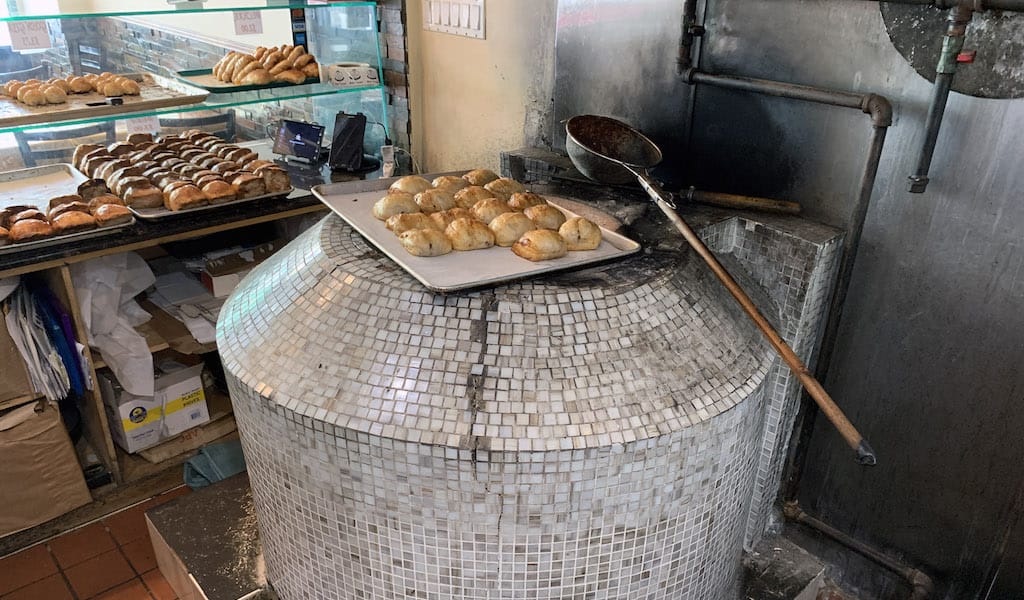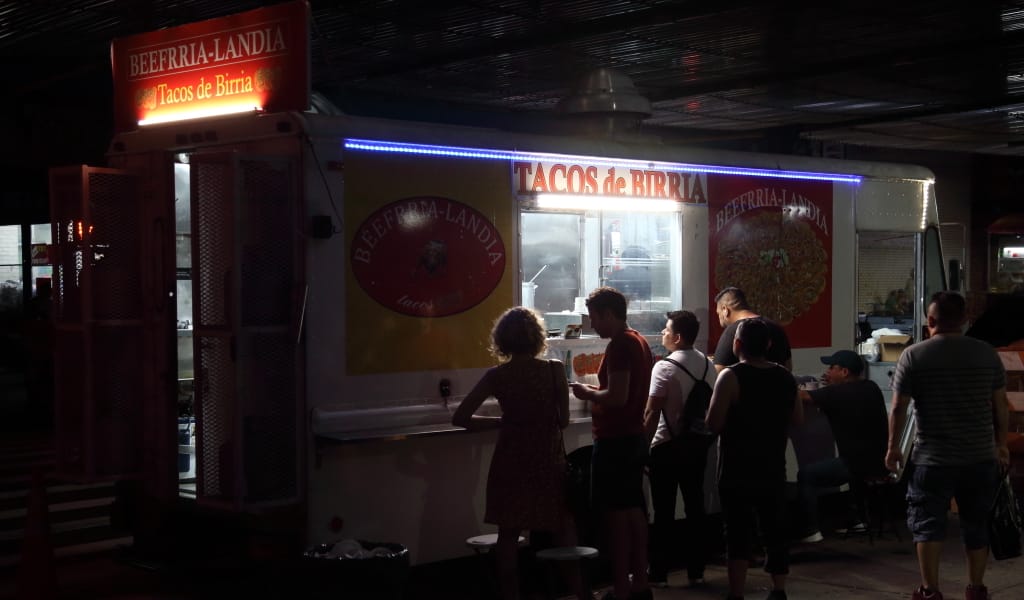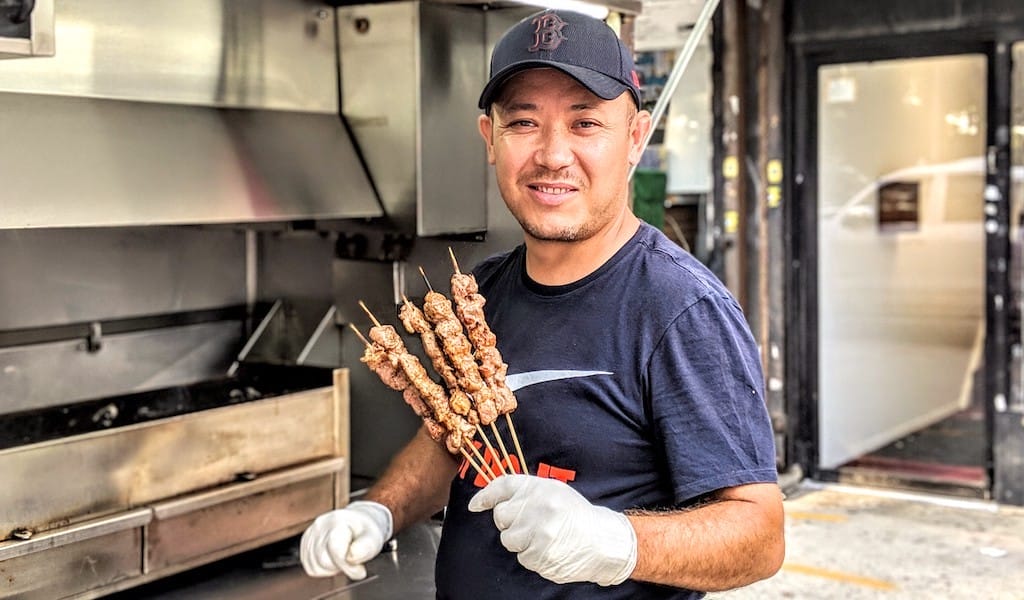Chaikhana Sem Sorok, a newly opened little café just off the Central Asian thoroughfare of 63rd Drive in Rego Park, proves more than anywhere else that all cuisines are fusion cuisines, if you go back far enough. Every day but Saturday – the Sabbath – loaves of round, crusty bread called non or lepyoshka emerge from the restaurant’s towering brick tanur oven. They’re distinctly Uzbek, but share Persian roots with the naan of the Indian subcontinent.
Meanwhile, samsas, similar to samosas, bake while clinging to the sides of another tile tanur, which was built in Samarkand and shipped to Rego Park. Filled with onions and either lamb, pumpkin, or beef, and lightly charred like a Neapolitan pizza, they are Chaikhana’s big draw.
“We serve Bukharian Jewish food, and also Uzbek and Tajik food,” explains owner Gavriel Binyaminov. “They’re similar, because we’ve lived there for a thousand years, and we speak the same language. We have a lot of close traditions.” Chaikhana’s short menu is a beautifully festive display of traditional Central Asian cooking.
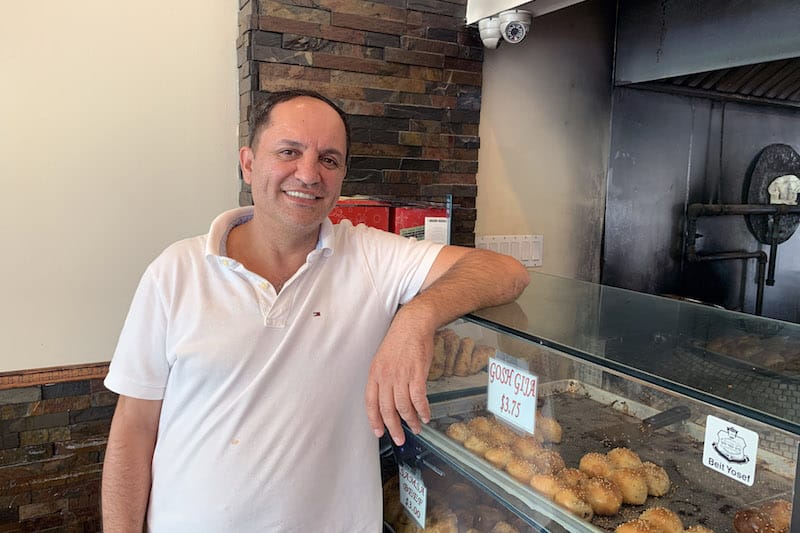
The cuisines of the Silk Road, from Turkey to the Korean peninsula, reflect many centuries of cultural and culinary fusion – Turkish mantı dumplings, for example, are closely mirrored by Uzbek manti, Afghan mantu, and even Korean mandu. Plov, another excellent dish at Chaikhana, is a purely Uzbek staple, but it traces its origins back to ancient Persian polo. Chaikhana’s Samarkand-style plov is a pleasantly oily heap of rice topped with tender slivers of carrots, chickpeas, whole cloves of garlic, boiled quail eggs and a couple hunks of rich, warmly spiced lamb.
While samsas may be their bestseller, lagman, a hand-pulled noodle soup that has its own origins a little farther east on the Silk Road, in the Uyghur region of western China, comes a close second. The toothsome noodles in this rendition of lagman swim in a meaty red broth showered with green onions, all of which comes with a big slice of tandoori bread. It almost feels out of place in a Bukharian restaurant, but it’s been part of this traditional Jewish cuisine for hundreds of years.
Chaikhana Sem Sorok proves more than anywhere else that all cuisines are fusion cuisines.
As Chaikhana’s website will tell you, the Bukharian Jews are descended from Israelites who may have migrated from the Holy Land to the Emirate of Bukhara, present-day Uzbekistan and Tajikistan, as early as the 10th century BC. Along the way, they picked up the Persian language and slowly developed their own dialect, Bukhori. Over the years, Bukhori has gradually been superseded by Russian and Uzbek, though Gavriel and his business partner and brother-in-law, Sergey, both speak it at home.
The name Chaikhana Sem Sorok also represents a cultural hybrid. In Uzbek, chaikhana refers to a café or teahouse, while, as Gavriel explains, “sem sorok” is the name of a popular Jewish song, one of many in Russian that is said to originate in the port city of Odessa. On the surface, it may seem like Gavriel is a newcomer to the restaurant business – this is his first restaurant in the U.S., and it’s only been open for four months. But before opening the place, Gavriel says, “I came here from Moscow. I opened a restaurant there, 15 years ago.” As he explains, his business there was also called Chaikhana Sem Sorok and had a similar menu, though it also manufactured and distributed kosher Uzbek-style sausages.
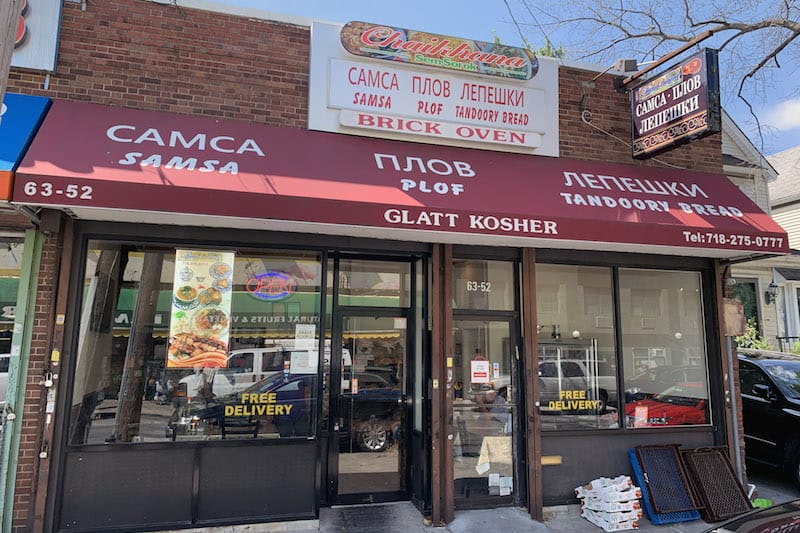
After arriving in New York, Gavriel became a medical technician specializing in neurological testing; but with years of experience in the restaurant business, he eventually gravitated back towards Bukharian cuisine. “The difference between this and another Bukharian restaurant is, we make everything by hand,” says Gavriel. “We don’t buy anything from another store. And everything is Glatt kosher.”
Since all of the meat on the menu at Chaikhana Sem Sorok meets strict kosher specifications, it’s become a popular choice for Orthodox Jews of all backgrounds; in fact, the crowd here represents the spectrum of Central Asian and Jewish communities. According to Gavriel, since kosher meat is also considered to be halal, his clientele is “maybe 30 percent Ashkenazi, 50 percent Bukharian, and 20 percent Muslim.” The kitchen staff at Chaikhana, like the Uzbek diaspora in New York at large, is predominantly Muslim.
One weekday morning, as Gavriel and Sergey sit at a corner table preparing the tomato-based dipping sauce for the samsas, they speak to customers and each other in Russian, Uzbek, Bukhori and English. This mixture is typical of life in Rego Park, just as the fusion of Persian, Turkish, Chinese, Uzbek and Jewish cuisines is nothing new in Bukharian cooking. A noodle soup like lagman may seem to be part of a different culinary world from oven-baked flatbread and lamb samsas, but these foods have coexisted for many generations. “It’s all traditional,” Gavriel says, “we cook the same food at home.”
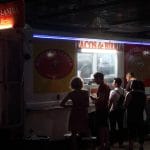 December 17, 2019 Best Bites 2019
December 17, 2019 Best Bites 2019
Location, location, location is a familiar mantra of New York real estate; invariably it […] Posted in Queens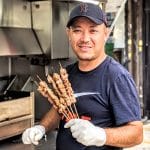 September 11, 2019 Nurlan
September 11, 2019 Nurlan
During a busy evening on Main Street in Flushing, the sight of a food cart grilling […] Posted in Queens May 12, 2016 Queens
May 12, 2016 Queens
For those interested in visiting Tashkent or Samarkand, an easier trip might involve […] Posted in Queens Migrant Kitchens, Queens
Ike AllenIke Allen
Published on September 23, 2019
Related stories
December 17, 2019
QueensLocation, location, location is a familiar mantra of New York real estate; invariably it comes to bear on restaurants and other food businesses, too. When e-commerce giant Amazon decided not to build a second headquarters in Long Island City, many food vendors were disappointed, sometimes bitterly, at the loss of a possible 25,000 new customers.…
September 11, 2019
QueensDuring a busy evening on Main Street in Flushing, the sight of a food cart grilling skewers of meat doesn’t seem out of the ordinary on a thoroughfare filled with street vendors. After hanging around long enough, though, it becomes clear that this cart is different from similar ones up the block. The most obvious…
May 12, 2016
QueensFor those interested in visiting Tashkent or Samarkand, an easier trip might involve heading to the Rego Park and Forest Hills neighborhoods of Queens, home to much of the borough’s Central Asian Jewish diaspora. The neighborhoods comprise two main thoroughfares: 63rd Avenue, which changes to 63rd Street, and 108th Street. Both roads have a range…







































